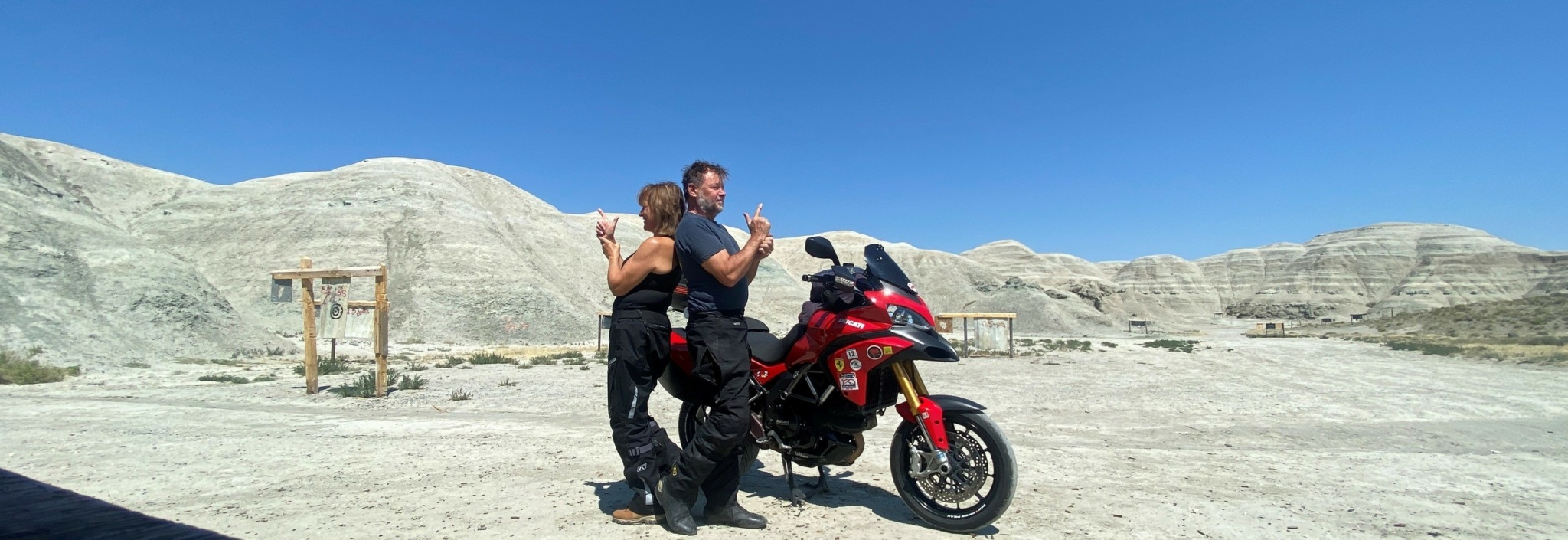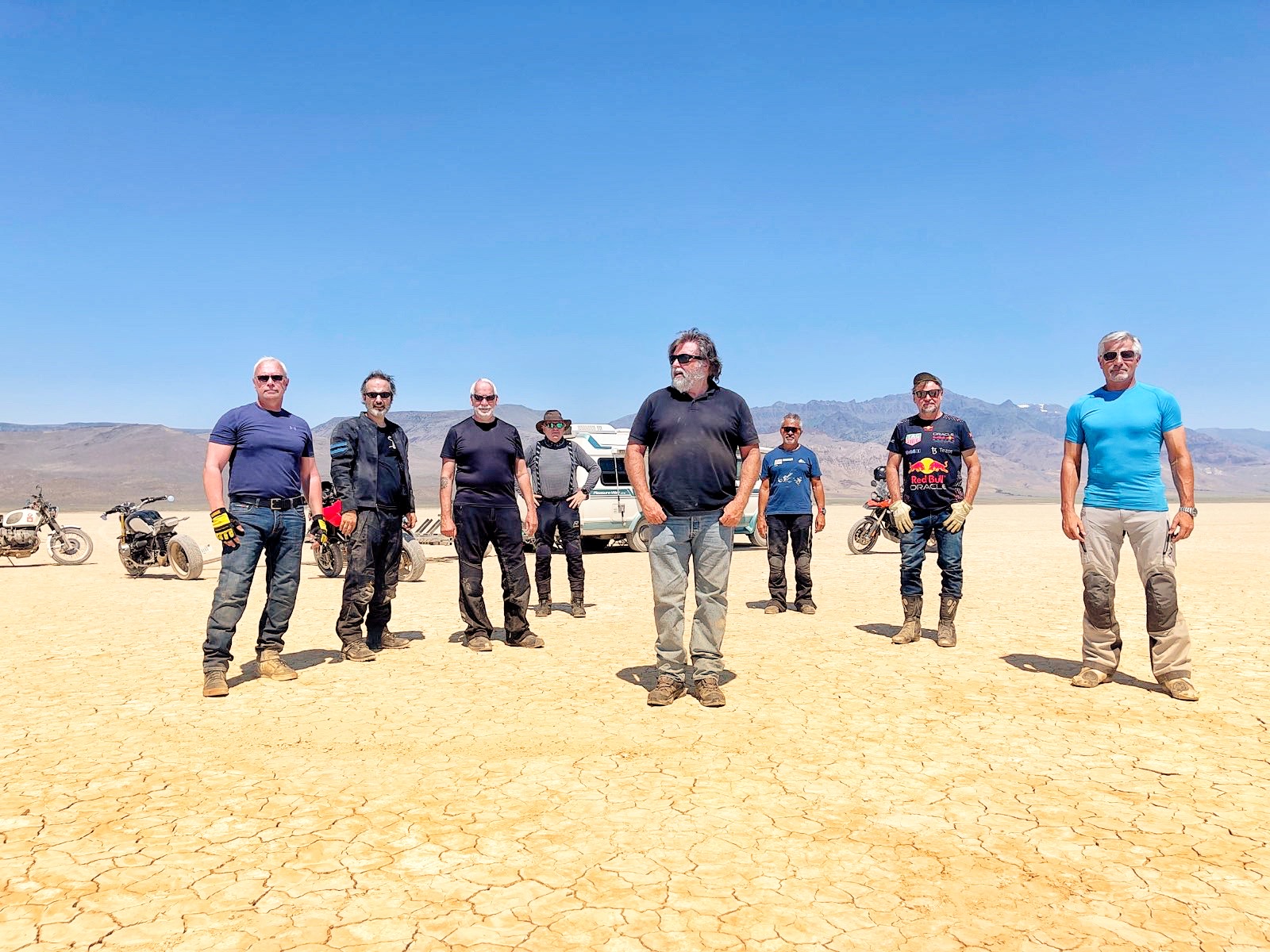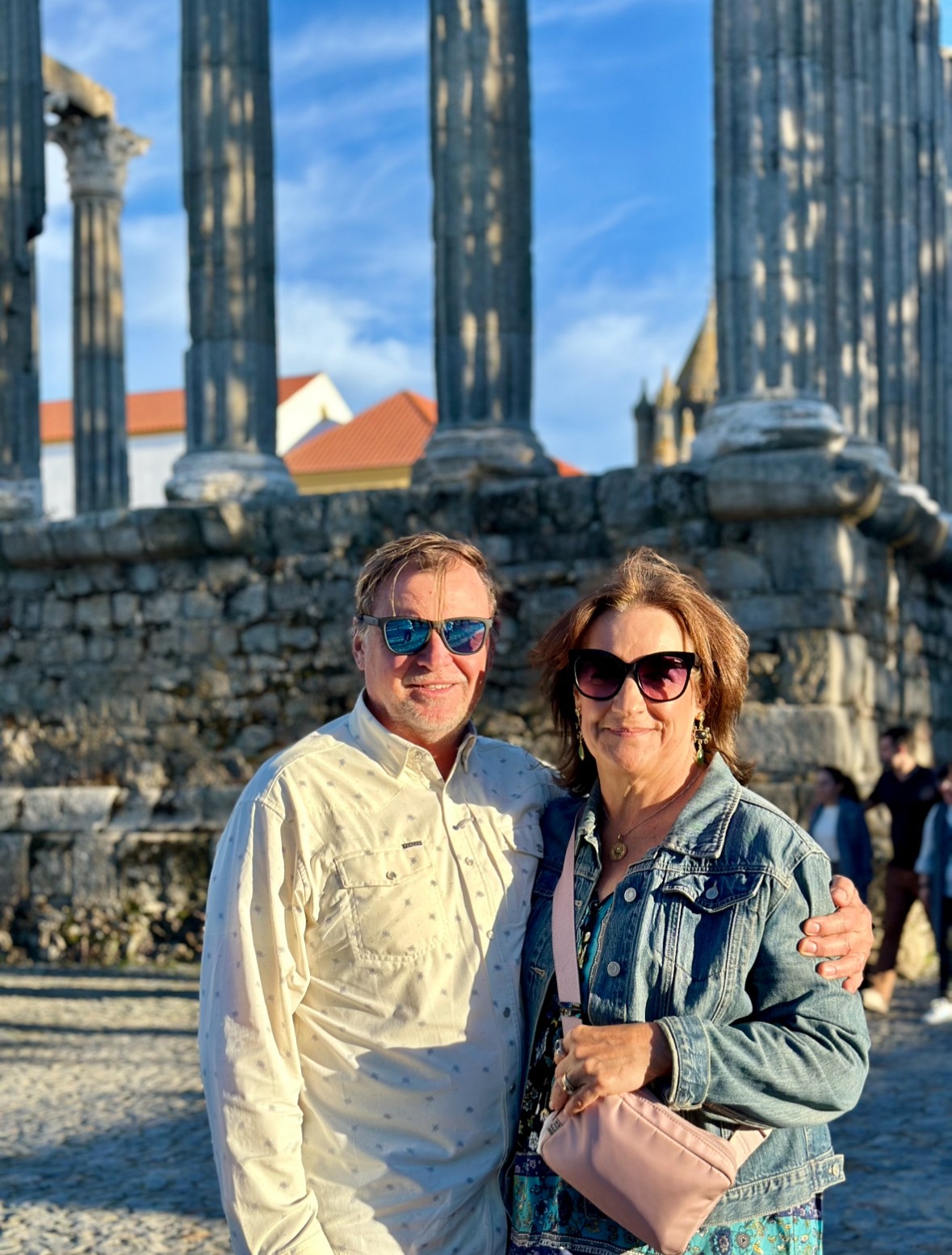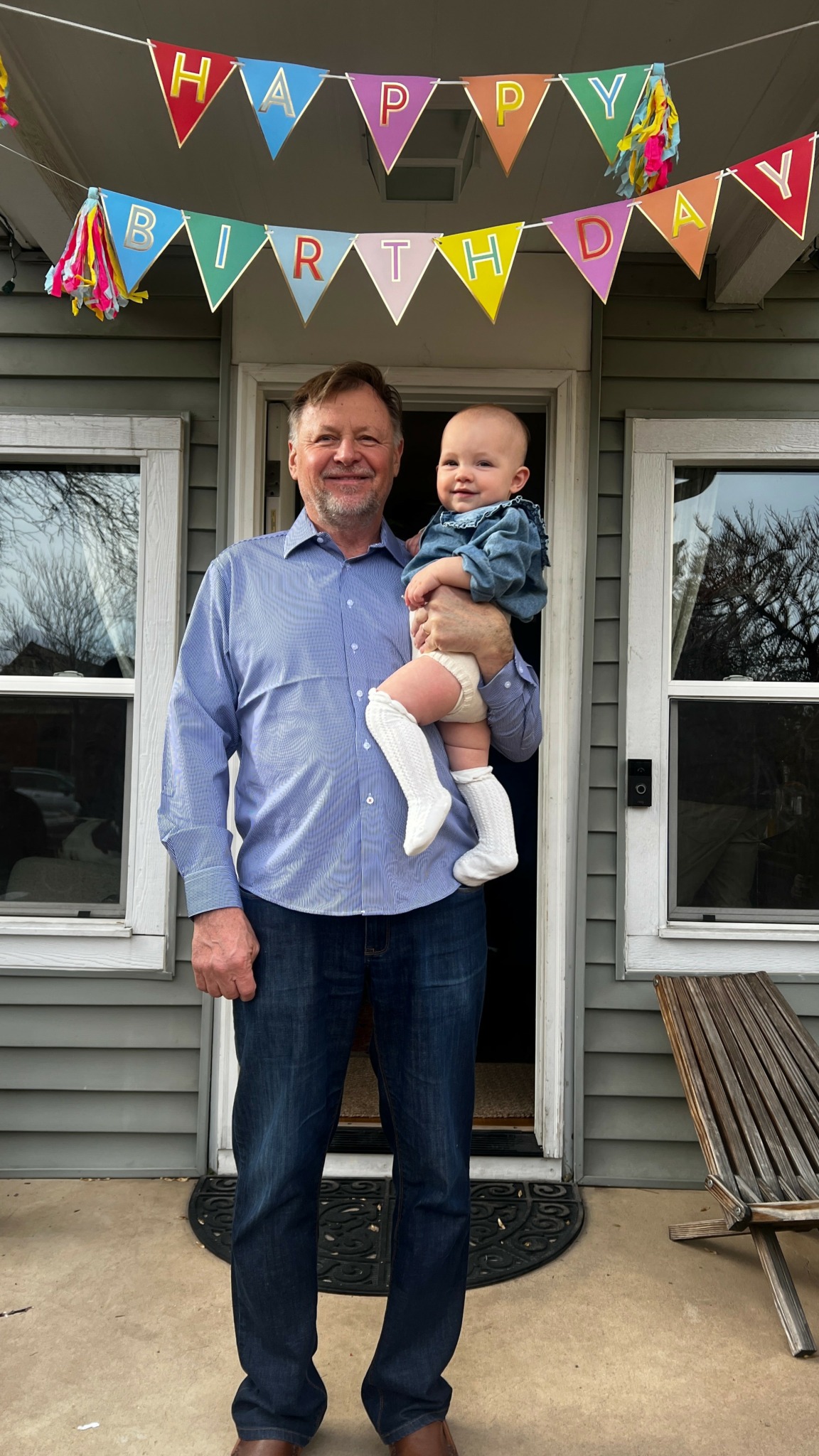Alright – so today we’ve got the honor of introducing you to Ray Roske. We think you’ll enjoy our conversation, we’ve shared it below.
Alright, Ray thanks for taking the time to share your stories and insights with us today. Coming up with the idea is so exciting, but then comes the hard part – executing. Too often the media ignores the execution part and goes from idea to success, skipping over the nitty, gritty details of executing in the early days. We think that’s a disservice both to the entrepreneurs who built something amazing as well as the public who isn’t getting a realistic picture of what it takes to succeed. So, we’d really appreciate if you could open up about your execution story – how did you go from idea to execution?
My buddy and I (co-founder Steve Johnson) have a secret motorcycler club that does good in the world. Back in 2019 just before COVID, I was in Chicago for business. I was using my phone to order a Lyft. I saw a young kid on the street trying to get a meal. I could not stop thinking about it. A friend of mine is an elementary school teacher. She described the ‘walk of shame’ where her kids had to go through the cafeteria at the end of the day and pick up their blue backpack which contained their school-provided snacks for the weekend. Once COVID spread and the world shut down, they could sometimes get a drive-thru backpack, IF they had a car. Most did not.
For my day job, I sell innovative solutions in the construction industry In the middle of the night, I woke up and had this idea for building a platform and an app to solve the problem. The idea would be that with a smartphone and a simple QR code, a kid or family could walk into a nice restaurant and buy a healthy meal like ‘normal’ people and pay for it discretely with donations from people who used the same app. Scan a QR code in a restaurant and buy a kid a meal.
I began pitching the idea to restaurants in Denver Colorado and Portland Oregon, Then, Steve introduced me to our first student advocate, BJ. She lived in in Reno Nevada, so that became the focal point of the pilot. To start a true pilot program, we also needed to recruit a community-minded, healthy restaurant to be a part of the program. It needed to be one who cared for their community and would match our donations. Steve and his wife Lisa funded us to launch and we decided to simply started buying gift cards which BJ distributed to her students.
Our first restaurant; Great Full Gardens, responded to my email pitch and told us it was a wonderful idea, that they would match whatever we could give them in food value. amazing people, agreed to help. Steve and Lisa funded that initial effort for the first 6-8 months out of their own pockets. Donations started trickling in by word of mouth and Facebook posts..
I have a close friend in my organization who also happens to be our SVP and GM. It was a cold fall morning and I’d taken a day off to go salmon fishing near Gunnison, Colorado. I scheduled an early morning call with him to pitch the idea. He gave me nearly an hour of his time asking dozens of questions and helping me navigate what was possible and what was not likely to happen within our company.
For funding, he suggested we form a 501c3. Then we could register it within our organization and receive matching donations from employees. He’d help us by pitching a campaign between Thanksgiving and Christmas. We did just as he instructed us and he was a man of his word. The first year my colleagues donated nearly $15,000, most of which was matched.
We were introduced to a business owner, Robert Galfore who owns GDN Web Media. They Specialize in the Development and Management of Effective WordPress Websites. Robert has a heart for the disadvantaged and offered to build us a platform at cost.
We flipped a few motorcycles and raised the capital needed to build the platform and the app. Within 6 months, we launched the pilot program there in Reno.
We had a friend who knew non-profit management and during one of our conversations, he referred to it as “The Third Meal” because that’s the one the kids and families miss or skip. He told them he grew up missing his third meal quite often. The name just seemed right and Steve immediately formed the 501c3 and secured our domain.
With the platform built, a simple webapp, a dedicated student advocate and one partner restaurant, we began feeding 15 children and families. BJ sent us a note of gratitude from one of the mom’s saying she and her kids loved the tomato-basil soup and had never had it before. She told us of another middle school student who was acting out in class. She pulled him out to try to determine the root of his anger. He said he missed his brothers. They were both killed in gang related violence. She drove him to the cemetery and asked him to write them a letter. She shared one sentence of the letter with us. It said:
“I miss you. We get to go to a really nice restaurant. You’d like it a lot.”
That was enough to let us know we were doing the right thing. We had no idea what it would lead to.

Awesome – so before we get into the rest of our questions, can you briefly introduce yourself to our readers.
My day job centers around providing technical solution sales support for solving business process problems in the construction industry. Construction is one of those industries where old guys (like me) have decades of experience and and are not very excited about changing what’s always worked. Adopting and learning some new software that might take time and budget from the project with no guarantees of ROI is not an exciting prospect. My role is to help them understand and adopt smart technology, with proven results, that will keep them safer on the job, allow them to communicate and delegate easily and effectively.
The result is that they spend more time home with their families with less stress.
We offer this by providing solutions that allow them to proactively vs. reactively manage their project schedule, budget and documents. Additionally, I helped build our Innovation Lab, where customers could not only see and try our solutions but our partner solutions as well and how integration of the tools they were already using was a smart way to run their business.
As part of my role I look to emerging technology and connect with these organizations at the executive level, with an invitation to visit the lab and potentially partner with us, developing creative new use cases in combined technology. An example of this might using a drone to capture apoint cloud of construction site, overlaying that point cloud on the 3D BIM model and comparing that to the project schedule to measure project progress, Another is collaborative Virtual Reality where a team of people on the project can walk through a reality capture of the site together to solve design or construction issues while sitting at their desks in nine different countries.
I felt that if we could use technology to solve complex issues like these, we could solve a simple problem like feeding a child. The real issue here is relying on the generosity of the community and helping them understand that when we feed these kids, we are feeding the future. We believe with all our hearts that some of these kids will grow up to make the world a better place because of the kindness shown them by complete strangers,.

Can you tell us the story behind how you met your business partner?
I first met Steve in 1989 in Atlanta, Georgia. I was there for a wedding and was invited to a church service. I was not a church-goer at the time, but Steve read a story in the bible. In Luke 19 it reads;
“A man was there by the name of Zacchaeus; he was a chief tax collector and was wealthy. He wanted to see who Jesus was, but because he was short he could not see over the crowd. So he ran ahead and climbed a sycamore-fig tree to see him, since Jesus was coming that way.”
Steve described this little man as Danny Devito, and the whole congregation erupted in laughter. That was the first time I’d ever witnessed a preached really connect with his audience, making them laugh, yet think about the message behind the story. I’d imagined that’s exactly how Jesus was in his personality and told my wife that if we’d ever joined a church, it would be a church like this guy’s.
I was a contractor, a ‘job shopper’ as we were referred to, and had taken a job in Charlottesville Virginia working for Sperry Marine on periscope design and 3D modeling for submarines. That contract ended and I found myself taking a job in Washington DC. I hated politics and I hated traffic and only wanted to get back to fly fishing in Colorado, so I was surprised to hear the words coming out of my mouth. “Sure, I can start in two weeks.
What I thought would be a six month contract turned into twelve years and two more children. It just so happened that “this guy’s church” also happened to be there in Washington DC. I became close friends with the minister there named Russ, who helped me navigate the bible and become a Christian. As it turned out, he was being mentored by Steve.
Steve and his wife Lisa lived in NYC at the time and had a little girl named McCall and she was the same age as our daughter. My wife babysat McCall while Rus and Gail and Steve and Lisa and were having dinner and adult time. Steve presented Russ with a genuine US NAVY Mil Spec G1 Aviator Jacket with a custom logo on the back. He had a dozen or so made for his group of church leaders around the world, the US, Africa, the Caribbean, etc. It said ACES on the back and had a picture of a Joker.
We dropped McCall, met Steve and Lisa briefly and said goodbye. After they left, Russ asked me to try the jacket on and it fit perfectly. He said it suited my personality better than his. He was spot on. He’d rather shoot baskets wearing an LA Lakers jersey. I’d rather shoot planes wearing a leather jacket.
In 2002, my DC career ended and we finally moved back to Colorado so the kids could get to know their grandparents and extended family and cousins. It wasn’t until twenty years later that I would meet Steve again by chance when a mutual friend introduced us. Lisa had developed a rare form of cancer and the alternative treatment was not covered by insurance. I proposed we start to flip a few motorcycles to help offset the cost of treatment. Steve invited me on a ride with his ‘secret group’
It was then, on the return trip, the first time he visited my home since meeting him, that I pulled out the ACES jacket. As you can imagine, his mind was blown. After 15 years, we still continue to discover the ‘brothers from a different mother’ syndrome coincidences between, people, places and things we are passionate about., But helping the disadvantaged was and continues to be, number one.

Learning and unlearning are both critical parts of growth – can you share a story of a time when you had to unlearn a lesson?
Sometimes, even when all the pieces seem to be in place, you can still struggle with adoption of an idea, The concept of generating a QR code as a solution to “Dining With Dignity” (our motto) seems obvious. After a year, I felt frustration of having money for families and them not spending it. Why was it so hard?
Several reasons, Firstly, food insecurity. When you are in need, you tend to think; ‘I’ll save this for when I really need it’ instead of spending it. We told the families over and over again that we would replenish their accounts every month, but still the amounts continued to remain unspent.
Secondly, was transportation to and from the restaurant. If the cost of a taxi or Lyft exceeded the value of a meal, why bother? We began to work with our restaurants on offering delivery for a small, additional fee that would come out of their accounts.
Third was the stigma of trust and confidence. Some of our families struggled with thoughts of ‘What if the QR code doesn’t work or the restaurant doesn’t want ‘our kind’ dining in. Additionally, we discovered a few families used the funds to purchase a beer or wine with their meal. We felt this was inappropriate and worked with the restaurants to limit purchases to food only.
Finally, we discovered that many of our families were not technically savvy, meaning they had a phone but maybe it didn’t have internet access, could read a QR code or were even limited by a broken screen. This was clearly a problem. We decided to offer simple gift cards as an option and suddenly our spend rate increased dramatically.
Contact Info:
- Website: https://www.thethirdmeal.org
- Instagram: https://www.instagram.com/stevenlesliejohnson/?hl=en
- Facebook: https://www.facebook.com/BuyAkidAmeal
- Linkedin: https://www.linkedin.com/in/rayroske/
- Other: https://thethirdmeal.org/about-us/
https://www.westword.com/restaurants/the-third-meal-nonprofit-chook-16178872
https://www.denver7.com/news/front-range/denver/nonprofit-delivers-hundreds-of-meals-to-elementary-school-students-in-denver



